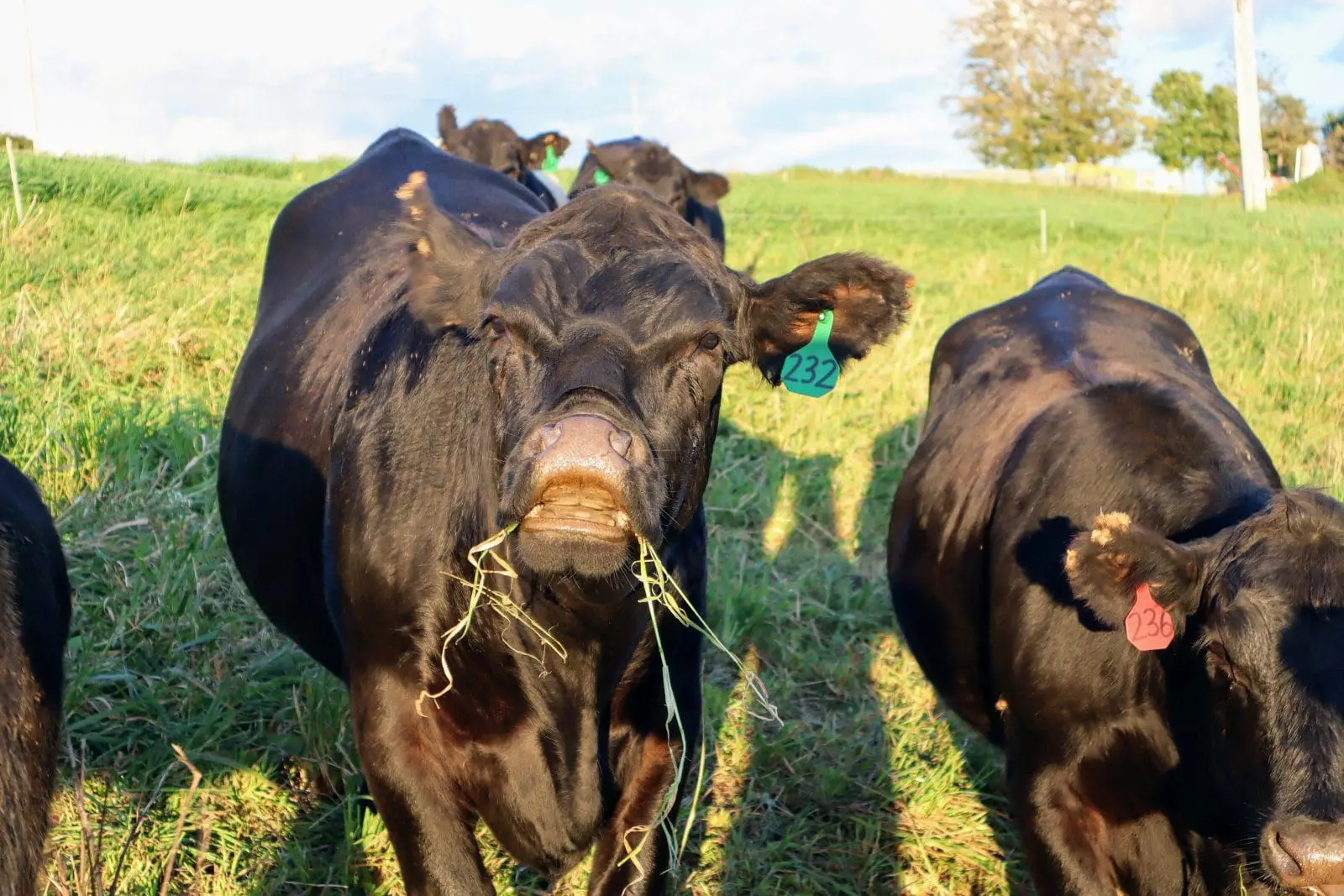It is easy to make the instinctive assumption, as a sighted human, that the animals on the farm interact with the world in the same way I do. The more I consider that, the less plausible the idea seems. My perceptions of place and setting are predominantly visually determined. Sound, scent, and taste each also inform me, but these are less significant in degree compared to sight.
It is fascinating to study cattle grazing. As I observe them eating, I get the impression that their noses are at least of equal importance as their eyes.
I found some discussion in a research paper stating that humans have 387 functional olfaction genes and dogs, with their amazing sense of smell, have 811 genes. Knowing what we know of dogs and their ability to track scents and even to detect diseases by smell, it isn’t surprising that they are so well equipped. But cattle have 970 genes just for olfaction, more than dogs have! Imagine your police department replacing canines with bovines for search and rescue. And drug sniffing cows at the airport!

We inhale air through two mostly downward-facing nostrils to detect odors, but cattle have scent detection on the large exterior surface of their noses as well as inside their nostrils. Their sinus cavity is longer and wider, providing more surface area for olfaction. Because their nostrils are larger, forward facing, and flexible, they possess the ability to directionally detect odors. Essentially their noses are a grass-driven targeting system.
When cattle are grazing in tall grass, their visual field is truncated by the dense foliage. We know from cattle behavior that they have relatively poor depth perception and that they experience difficulty processing visually complicated, high contrast novel environments. But despite these challenges with eyesight, when given the opportunity to choose between higher quality and lower quality forage, cattle use their noses to inform their other senses to select the most nutritious grasses.
As they move through the world, cattle are constantly judging grasses and leaves with the assured swagger of connoisseurs. And this isn’t strictly about flavor or basic nutrients like sugars and proteins. There is evidence that cattle will choose specific plants for their mineral content or medicinal properties. It seems that they develop a scent-memory. I learn to identify a dandelion leaf by its scalloped edge, but my cows probably know it more by smell. They know things about their world that I will never know because I can’t discern the same spectrum of odors.
By rotating the cattle through diverse pastures, hedgerows, woods, even clearing brush, we can give them access to a variety of grasses and leafy plants. Instead of feeding our cattle a premixed grain and hay ration at a feed bunk, we allow them to prioritize their dietary needs based on the plants they choose to eat. This is just another way that well-managed grazing and grass fed beef are superior to grain feeding cattle in feedlots. We allow them to use their noses to find what they need in their next bite. Let the cattle be cattle. They know best what to do with grasses.

2 thoughts on “A Nose For Grass”
Very interesting, Dave. I wonder if Big Ag already invented some kind of smell additive to take advantage of this.
Yes, they have. Although I wouldn’t say this is specific to “Big Ag”. This has been a technique used for a long time. People have known that cows really like the smell and taste of molasses. That has been used for centuries to boost the palatability and the energy levels of stale or low quality feed like straw or old hay. Depending on the location, other sugary syrups have also been used such as sorghum and corn syrup. So there are relatively low-tech additives like these straight syrups that can be blended into forage using a standard mixing wagon. And there are more specialized palatability enhancers with other additives, usually in bagged dry form, that are starting to be sold.
We don’t use molasses or any other sweeteners on our farm. Some grass fed standards allow for molasses since it is technically from a grass, but to my thinking that kind of stretches the definitions a bit too far.